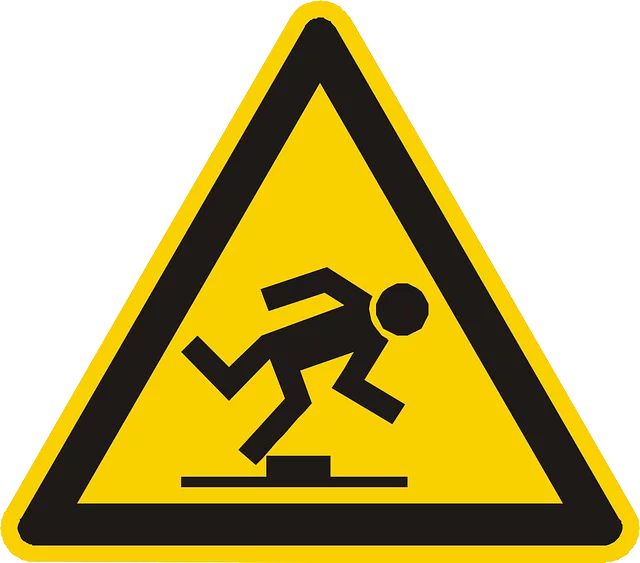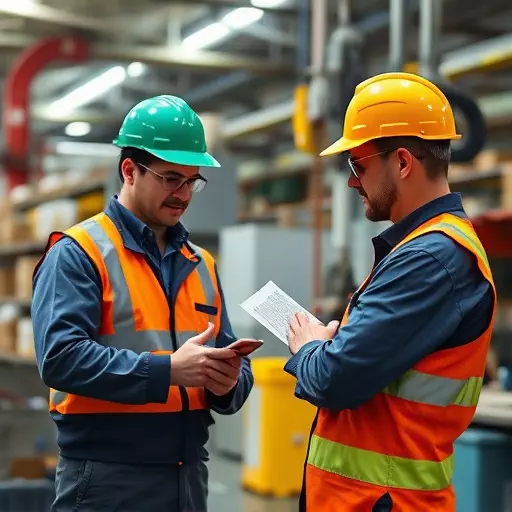Workplace compliance audits led by industrial hygiene consultants are key to maintaining health and safety standards. These experts assess various factors like industrial hygiene, risk assessments, and adherence to occupational exposure limits for hazards such as noise, chemical exposure, and ergonomics. Their goal is to verify employer control measures, ensuring employee protection below established exposure limits. Regular audits promote a culture of continuous improvement, prioritizing proactive hazard minimization for safer, healthier work environments. Industrial hygiene consultants are vital in navigating occupational exposure limits, conducting comprehensive workplace hazard evaluations, and implementing effective control measures. Preparation involves reviewing policies, training employees, organizing records, and engaging consultants. Post-audit actions include practical steps, monitoring plans, follow-up audits, and fostering ongoing safety assessments to maintain compliance and safeguard employee health.
“Workplace compliance audits are critical tools for ensuring safe and healthy work environments. This comprehensive guide explores the intricate world of these audits, shedding light on their purpose and process. From understanding the fundamentals to navigating complex topics like occupational exposure limits, it covers essential aspects.
Industrial hygiene consultants play a pivotal role in these processes, offering expert insights during audits. We’ll delve into key components of workplace hazard evaluations, providing valuable knowledge for businesses and employees alike. Get ready to explore effective preparation strategies and post-audit actions for continuous compliance and improvement.”
- Understanding Workplace Compliance Audits: A Comprehensive Overview
- The Role of Industrial Hygiene Consultants in Audit Processes
- Key Components of a Workplace Hazard Evaluation
- Navigating Occupational Exposure Limits: What Employees Need to Know
- Preparing for an Audit: Tips for Businesses and Employees
- Post-Audit Actions: Ensuring Continuous Compliance and Improvement
Understanding Workplace Compliance Audits: A Comprehensive Overview
Workplace compliance audits are a critical process for ensuring that organizations adhere to relevant health and safety regulations. These audits involve a thorough examination of various aspects within a workplace, including industrial hygiene, risk assessments, and adherence to occupational exposure limits. Industrial hygiene consultants play a pivotal role in these evaluations by assessing potential hazards such as noise, chemical exposure, and ergonomics. They conduct comprehensive workplace hazard evaluations, identifying areas that may pose risks to employee health and safety.
The audits are designed to verify that employers have implemented adequate control measures to mitigate identified hazards. By comparing the company’s practices against established occupational exposure limits, these audits ensure that workers are not exposed to dangerous levels of substances or conditions. Regular compliance audits foster a culture of continuous improvement, enabling organizations to proactively address and minimize workplace risks, ultimately contributing to a safer and healthier work environment.
The Role of Industrial Hygiene Consultants in Audit Processes
Industrial hygiene consultants play a pivotal role in workplace compliance audits by bringing specialized expertise to assess and mitigate risks. They conduct thorough inspections, examining various aspects such as air quality, noise levels, chemical exposure, and ergonomics. Their primary goal is to ensure that workplaces adhere to established occupational exposure limits, thus creating safer and healthier environments for employees.
During the audit process, these consultants evaluate workplace hazards, identify potential violations of safety regulations, and provide recommendations for improvement. They collaborate closely with management and workers to implement effective control measures, ensuring compliance not just with legal requirements but also with best practices in industrial hygiene.
Key Components of a Workplace Hazard Evaluation
A comprehensive workplace compliance audit begins with a thorough understanding and assessment of potential hazards. The key components of a workplace hazard evaluation include identifying all chemical, physical, biological, and ergonomic risks present in the work environment. Industrial hygiene consultants play a vital role here by conducting detailed inspections and utilizing specialized equipment to measure and evaluate employee exposure to these hazards. They assess factors such as air quality, noise levels, temperature, humidity, and more, ensuring that they adhere to established occupational exposure limits.
This process involves examining work processes, employee tasks, and the physical layout of the facility. By documenting findings and evaluating potential risks, organizations can implement effective control measures to mitigate hazards. This proactive approach not only ensures compliance with regulatory standards but also fosters a safer and healthier workplace culture.
Navigating Occupational Exposure Limits: What Employees Need to Know
Navigating Occupational Exposure Limits is a crucial aspect of workplace safety that often requires the expertise of industrial hygiene consultants. These professionals conduct thorough assessments and evaluations to ensure compliance with established guidelines set by regulatory bodies. By conducting a comprehensive workplace hazard evaluation, they identify potential risks and determine the levels at which workers may be exposed to various substances without suffering adverse health effects.
Employees should be aware that occupational exposure limits vary based on the type of substance or chemical present in the work environment. Industrial hygiene consultants help interpret these limits, ensuring that the workplace maintains safe conditions. This involves monitoring air quality, analyzing dust and fume levels, and even assessing noise levels to safeguard workers’ health and well-being.
Preparing for an Audit: Tips for Businesses and Employees
Preparing for a workplace compliance audit is crucial for businesses to ensure they meet industry standards and legal requirements. Before the arrival of industrial hygiene consultants, review all relevant policies and procedures related to health and safety. This includes understanding occupational exposure limits for various hazards identified during a previous workplace hazard evaluation. Conducting regular training sessions for employees can help them anticipate questions and understand their roles in maintaining compliance.
Encourage open communication among staff to address any concerns or ambiguities regarding safety protocols. Ensure all necessary records, including incident reports, inspection findings, and training materials, are readily available and organized. By following these tips, businesses can streamline the audit process and demonstrate a commitment to upholding robust workplace safety standards, minimizing potential fines or legal issues.
Post-Audit Actions: Ensuring Continuous Compliance and Improvement
Post-audit actions are a critical step in ensuring continuous compliance and driving workplace improvement. Once industrial hygiene consultants have completed their thorough evaluation, it’s essential to translate findings into actionable items. This involves addressing any identified hazards and implementing corrective measures that align with established occupational exposure limits.
Organizations should develop a comprehensive plan to monitor progress, conduct regular follow-up audits, and foster a culture of ongoing safety assessment. By adopting this proactive approach, businesses can maintain compliance, safeguard employee health, and create a safer, more productive work environment.


